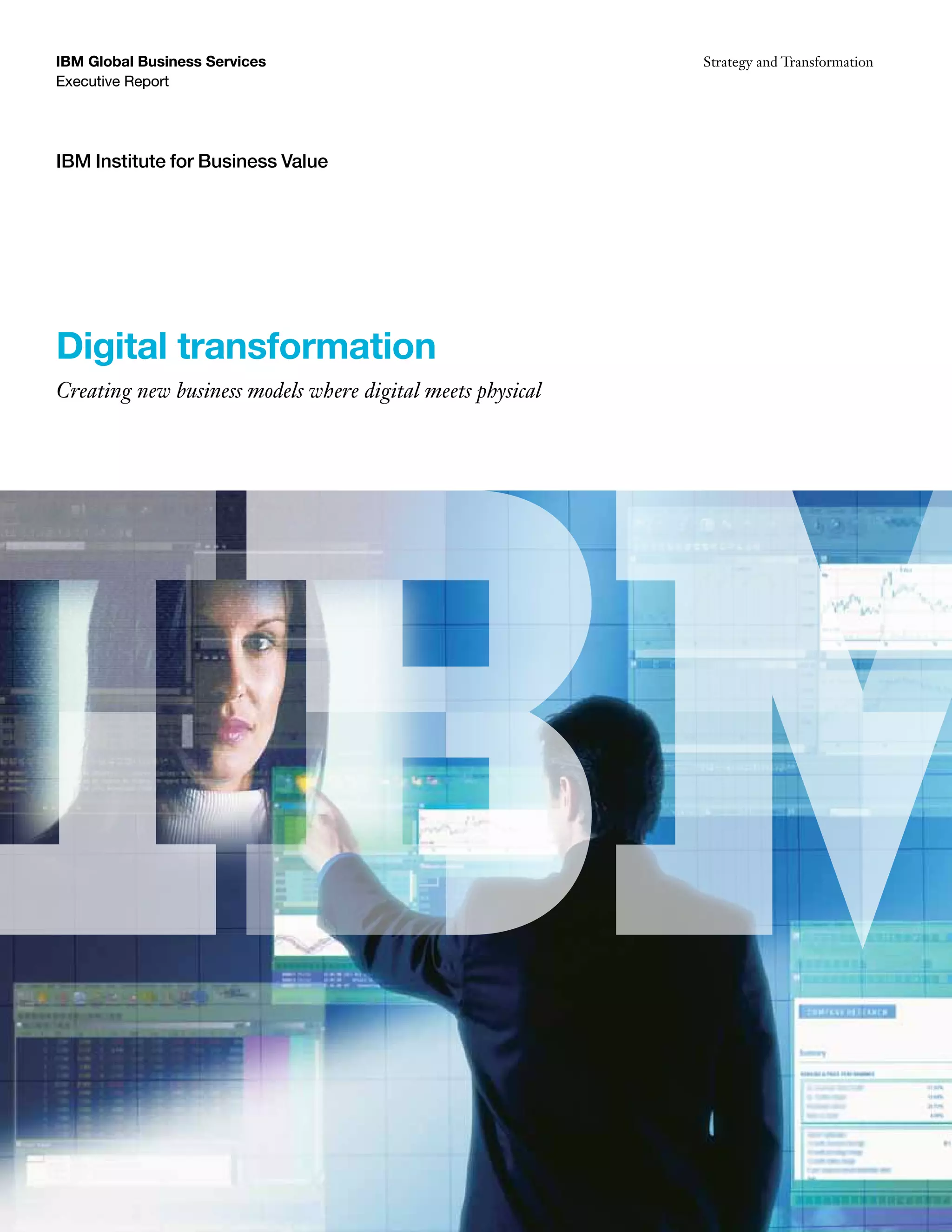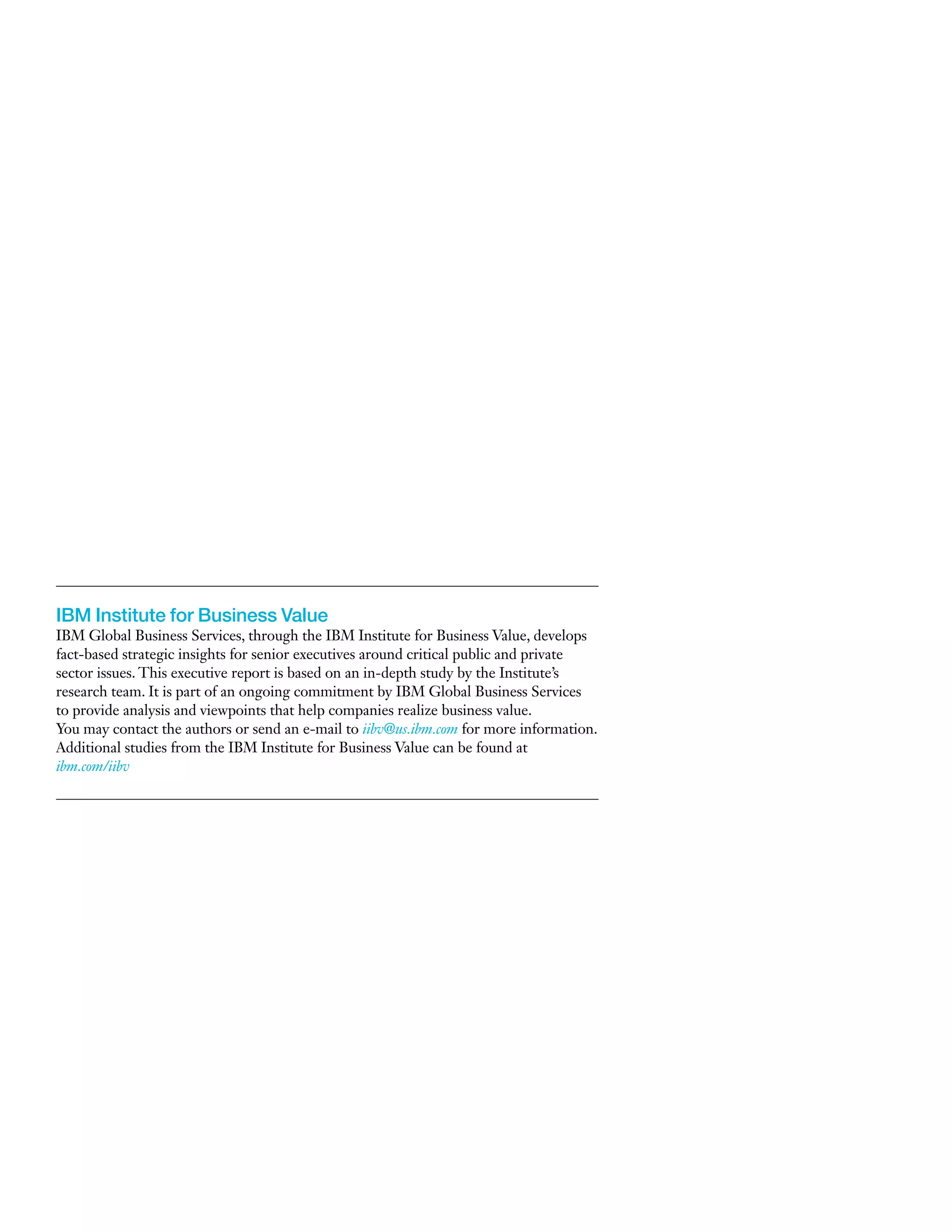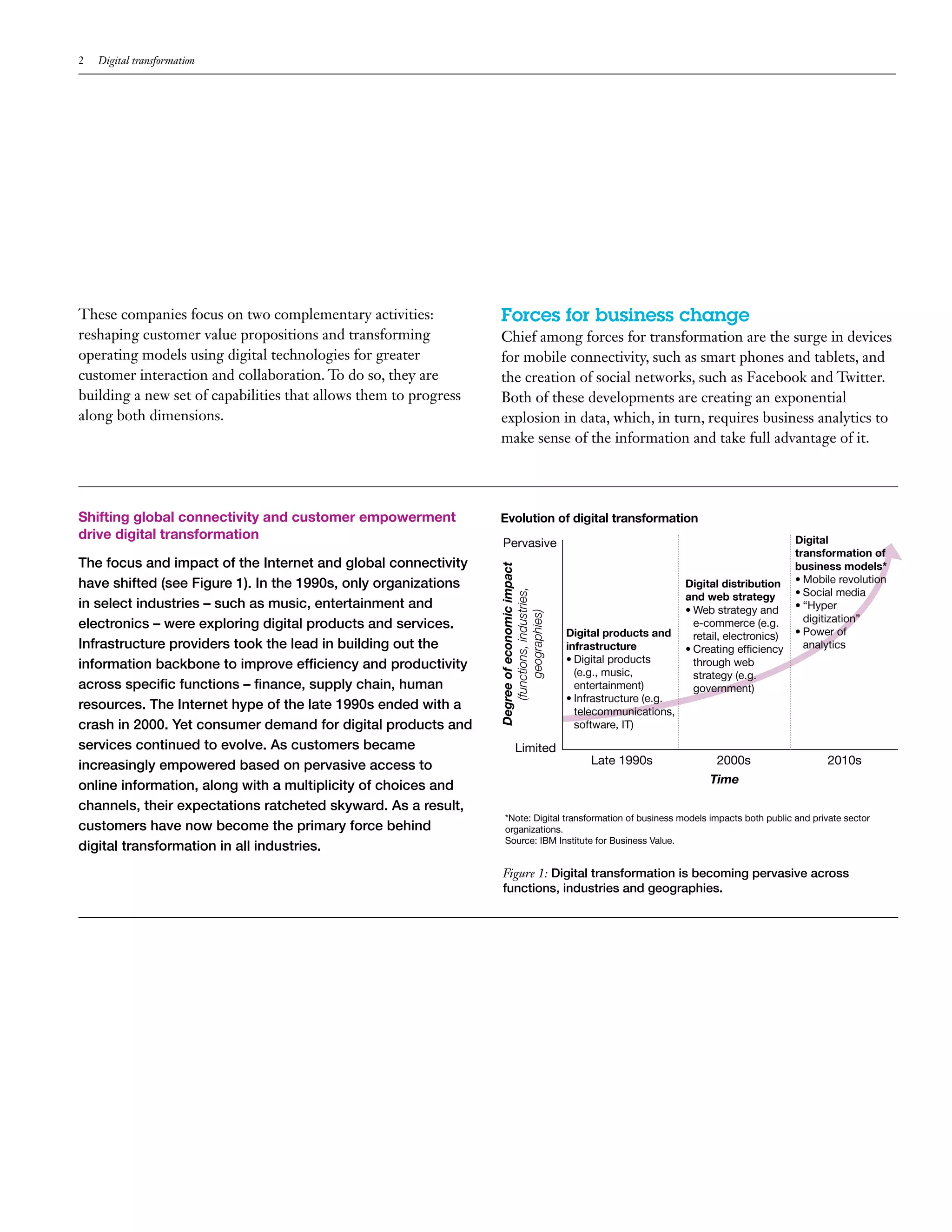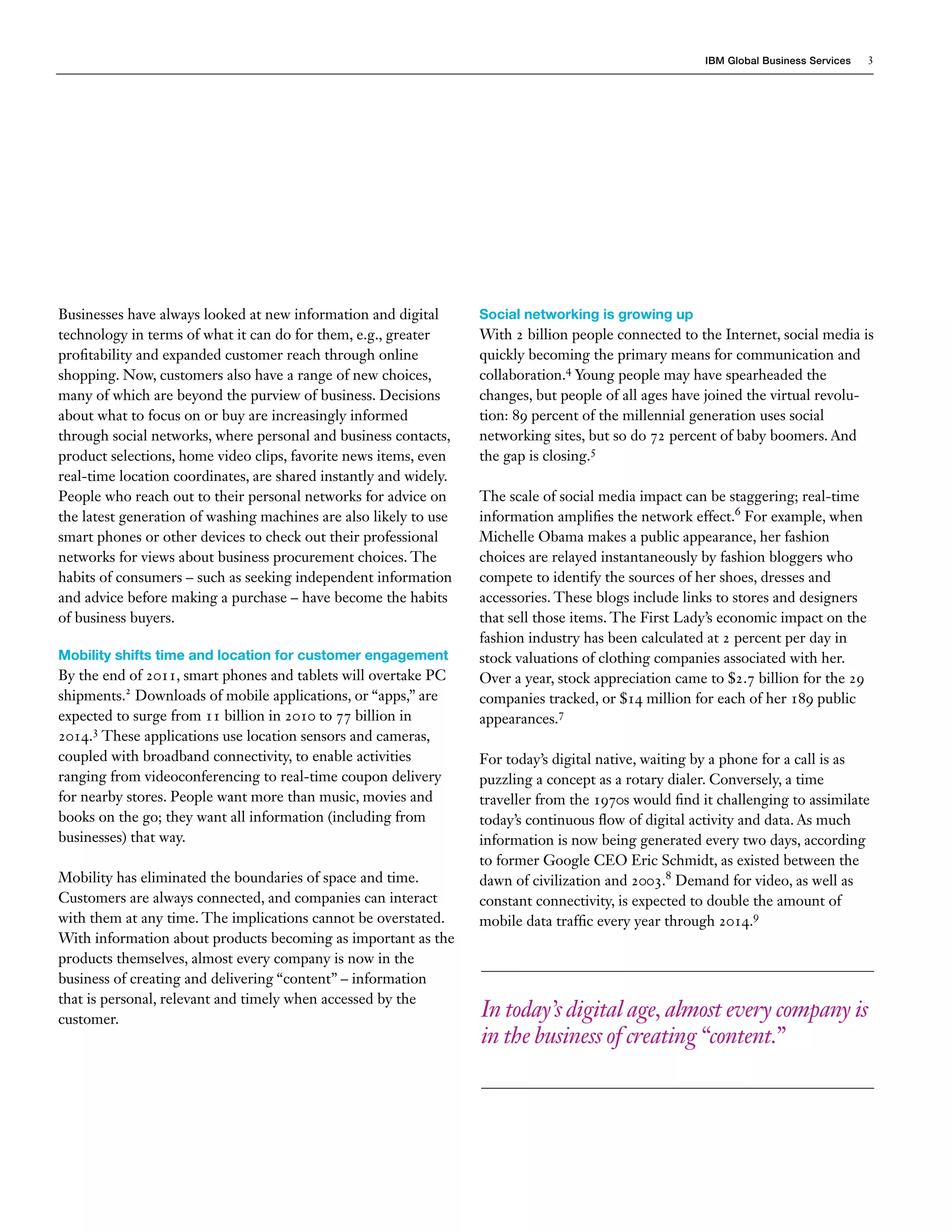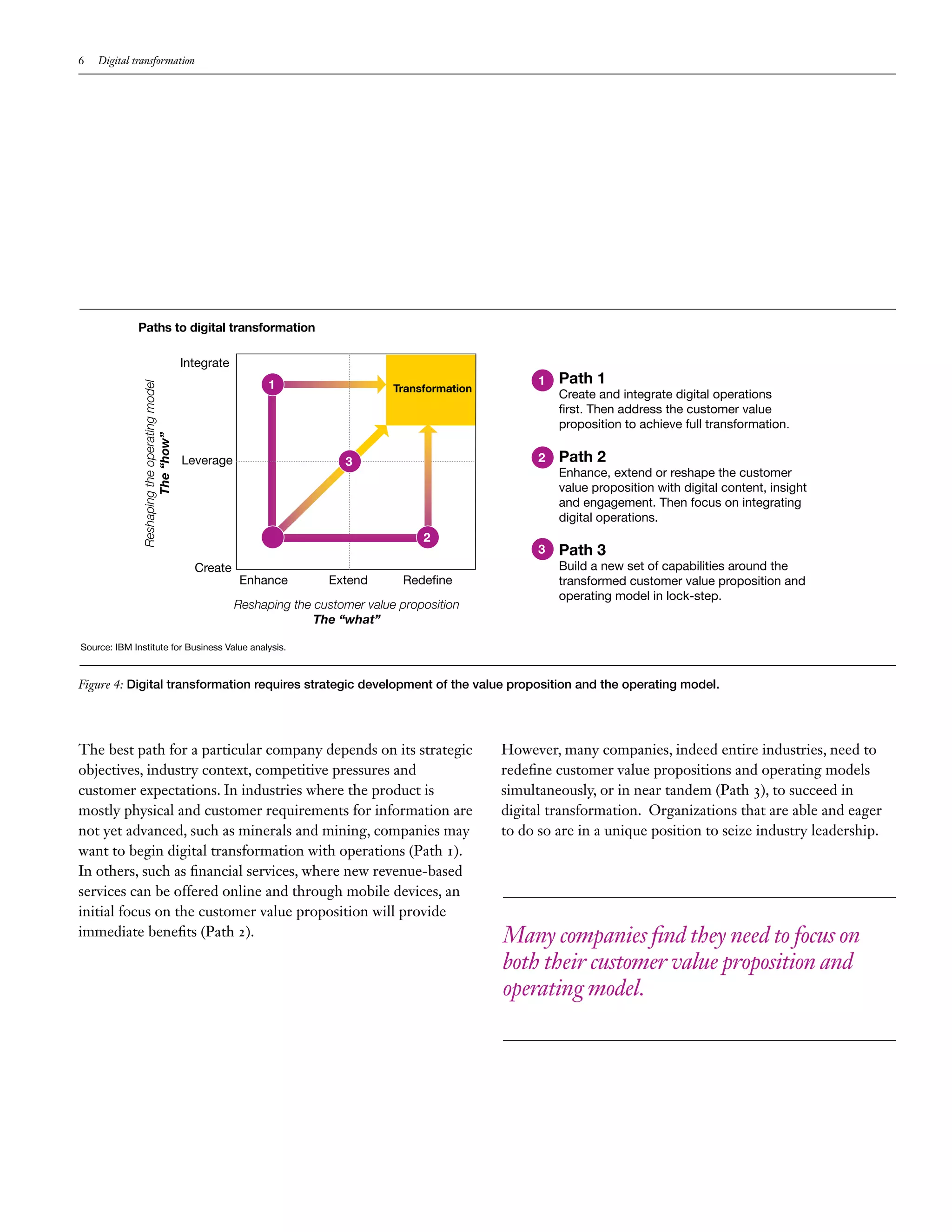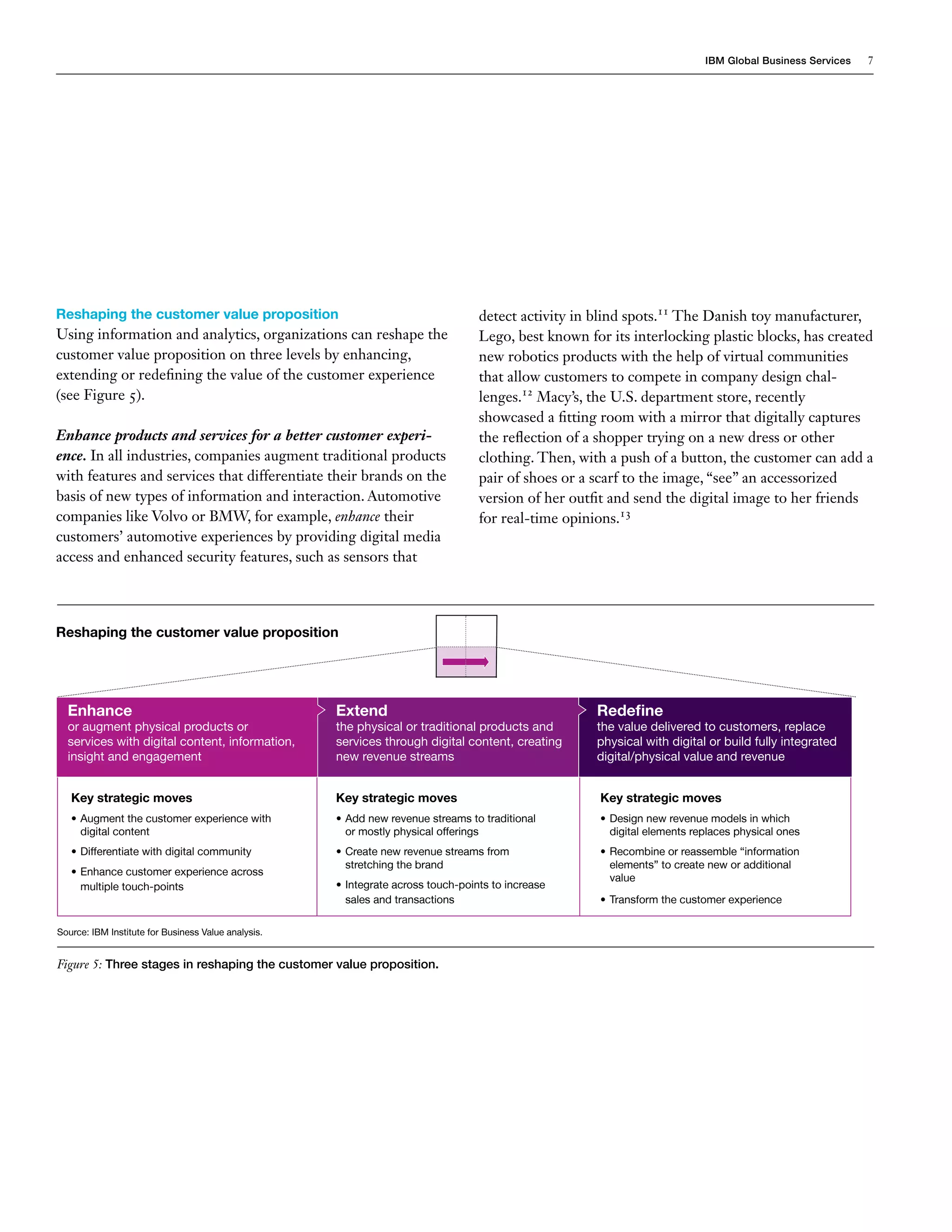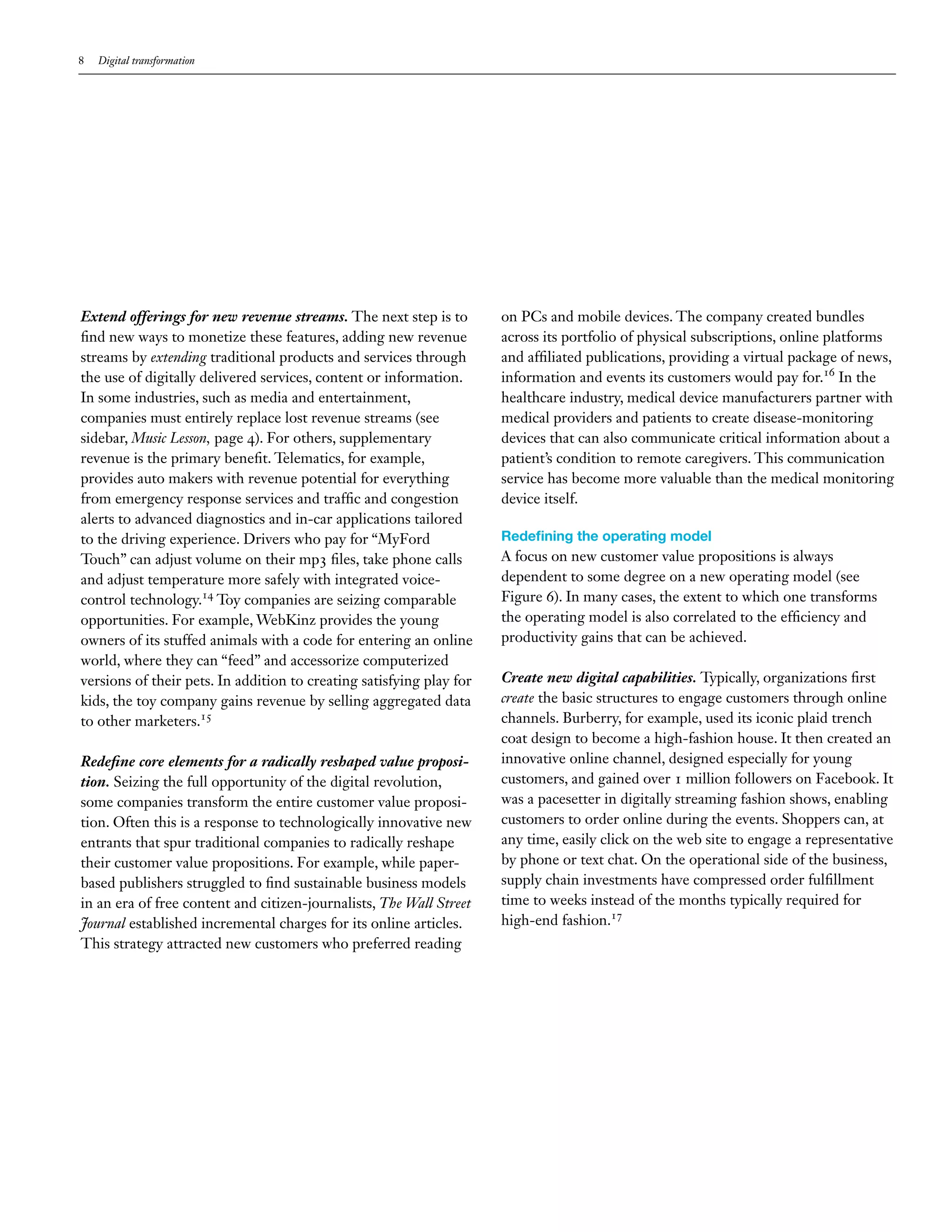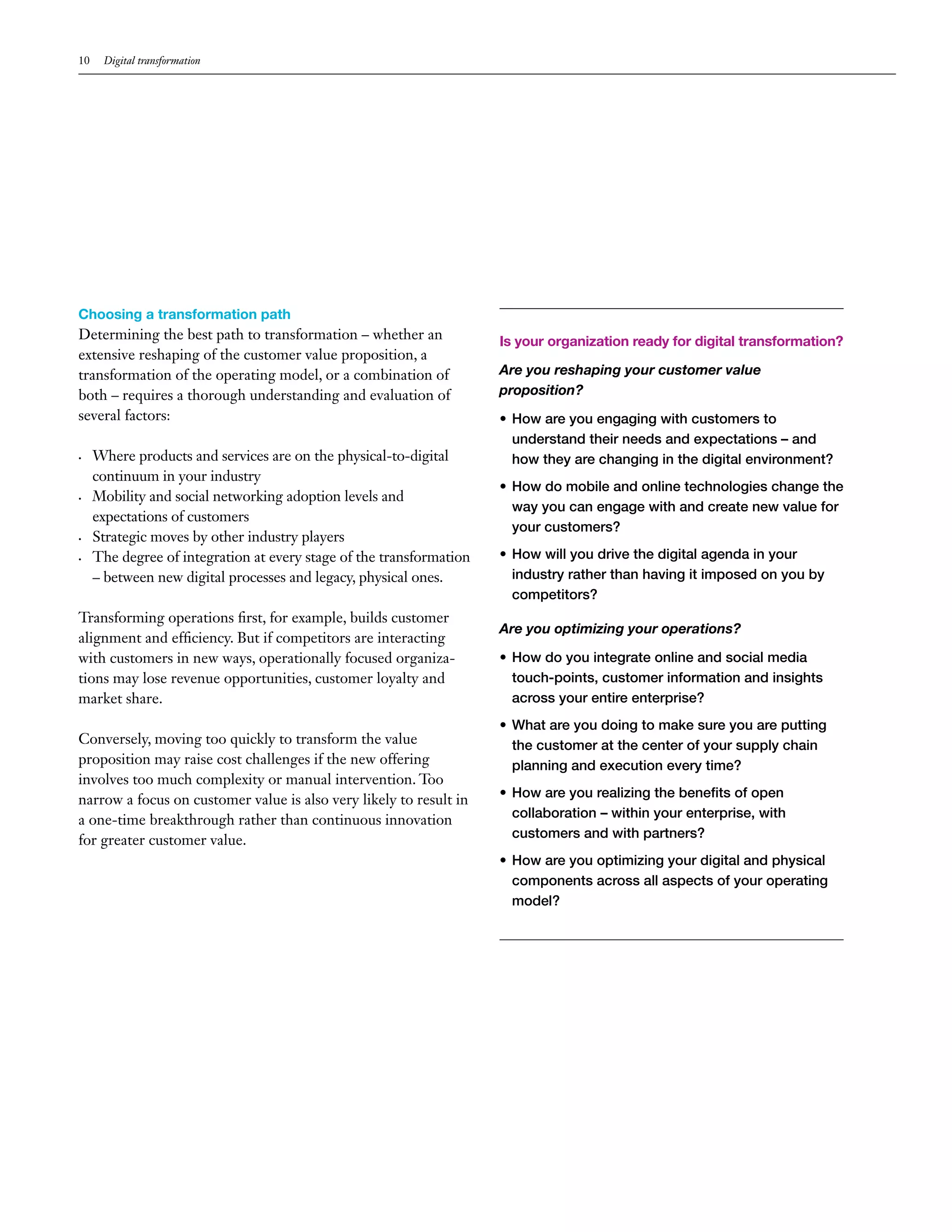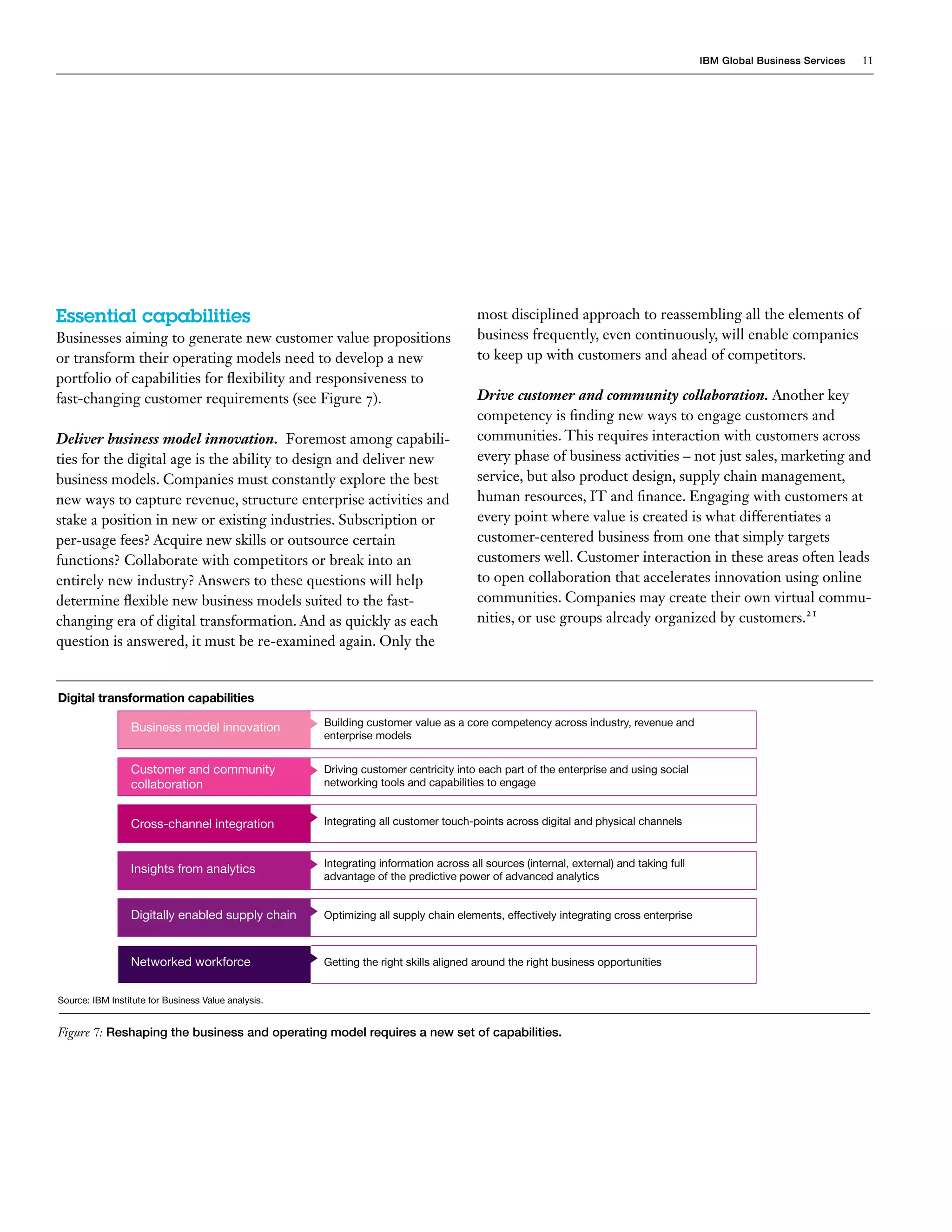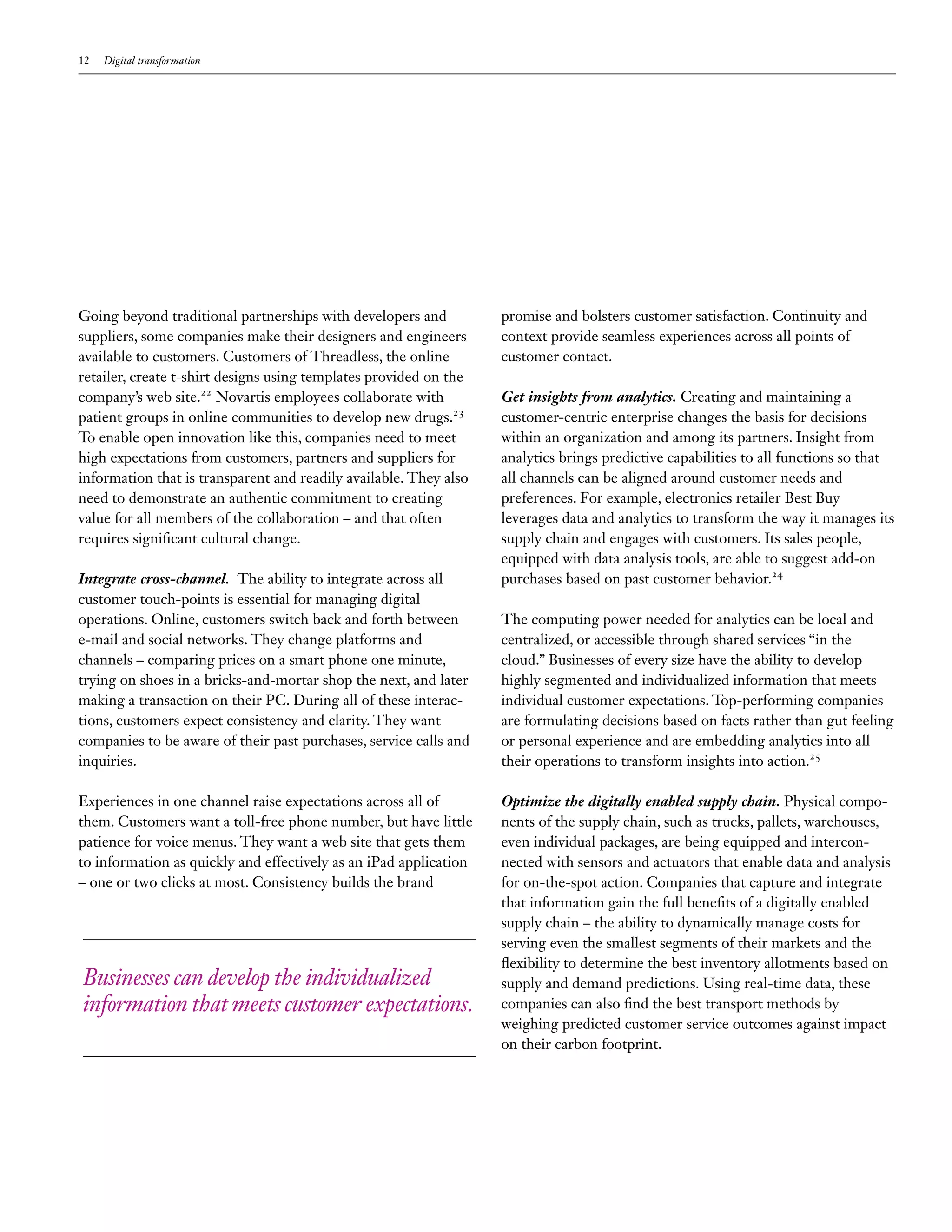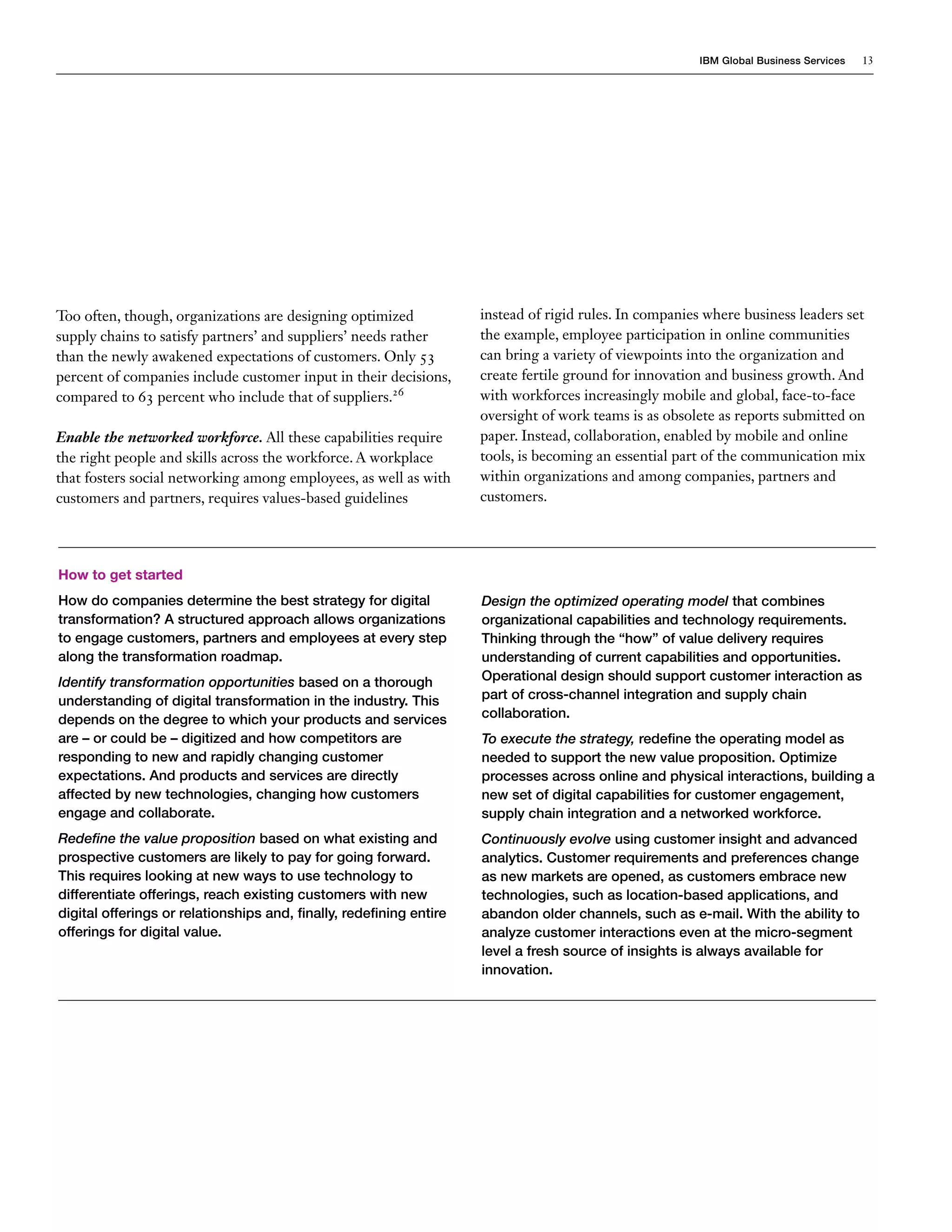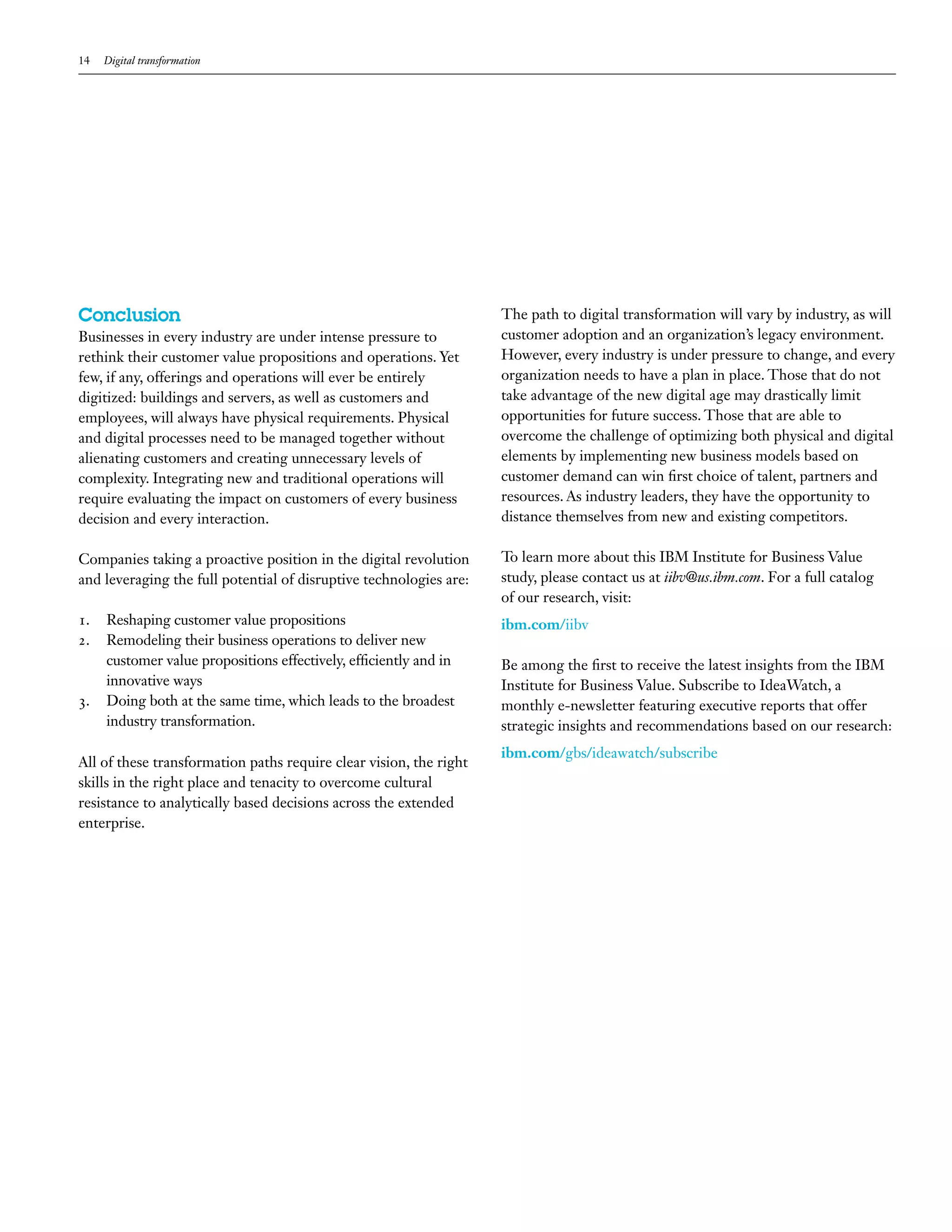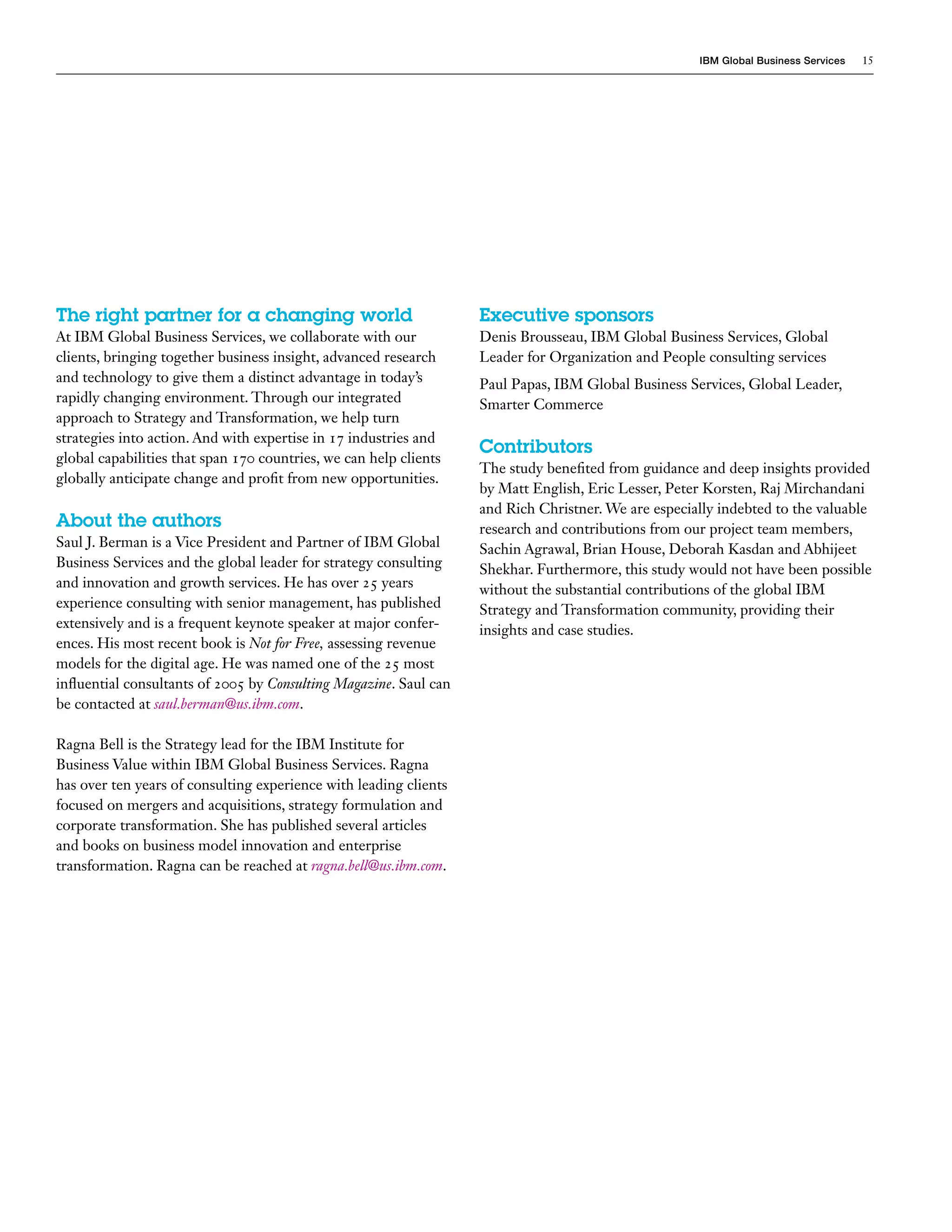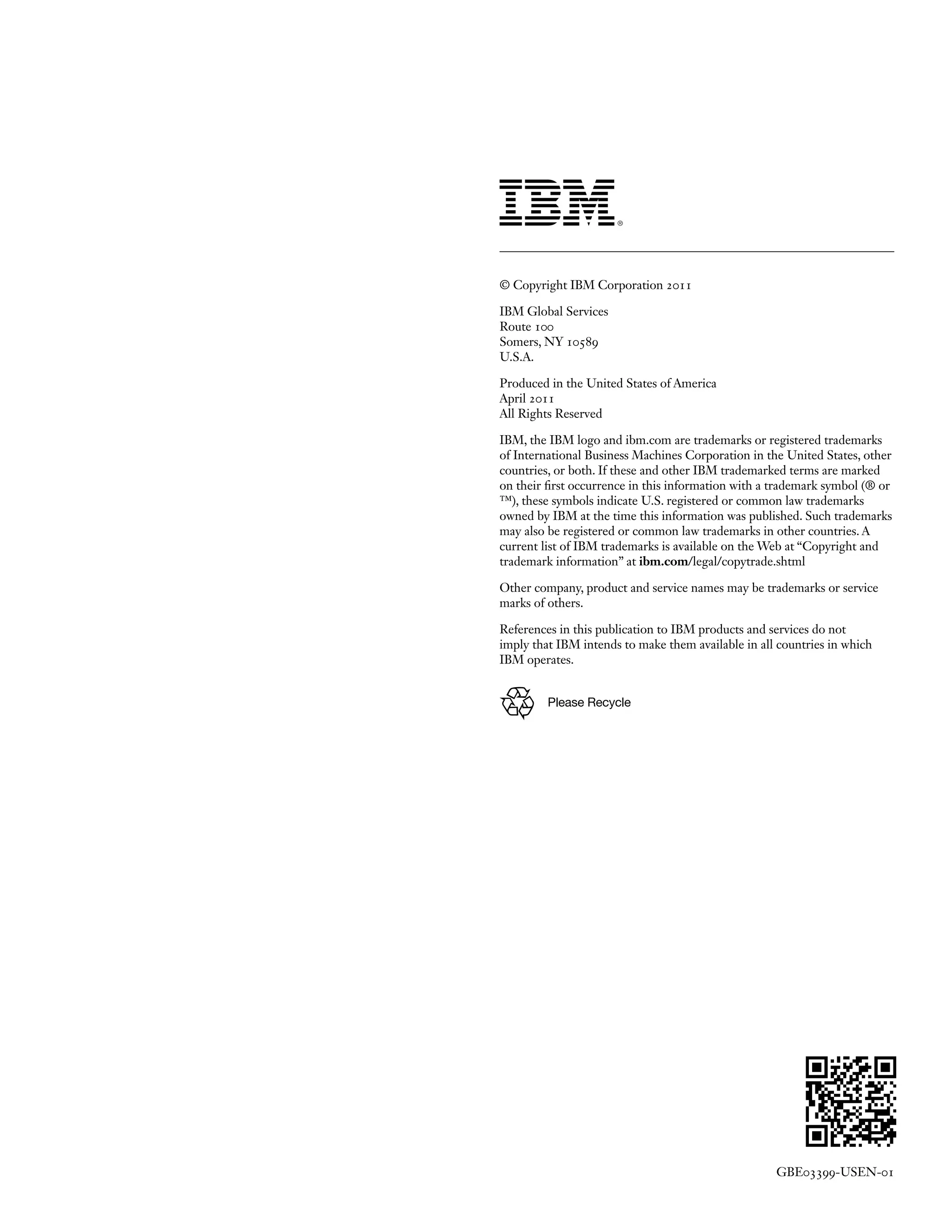This document discusses digital transformation and how businesses can reshape their customer value propositions and operating models to succeed in today's digital world. It covers the forces driving digital transformation like mobility, social media, and "hyper-digitization". Businesses can take one of three paths to transformation: 1) focus on digitizing operations first before the customer value proposition, 2) enhance the customer value proposition with digital offerings before transforming operations, or 3) transform the customer value proposition and operating model simultaneously. The document provides examples of how companies can enhance, extend, or redefine their customer value propositions to better meet customer expectations in the digital age.
